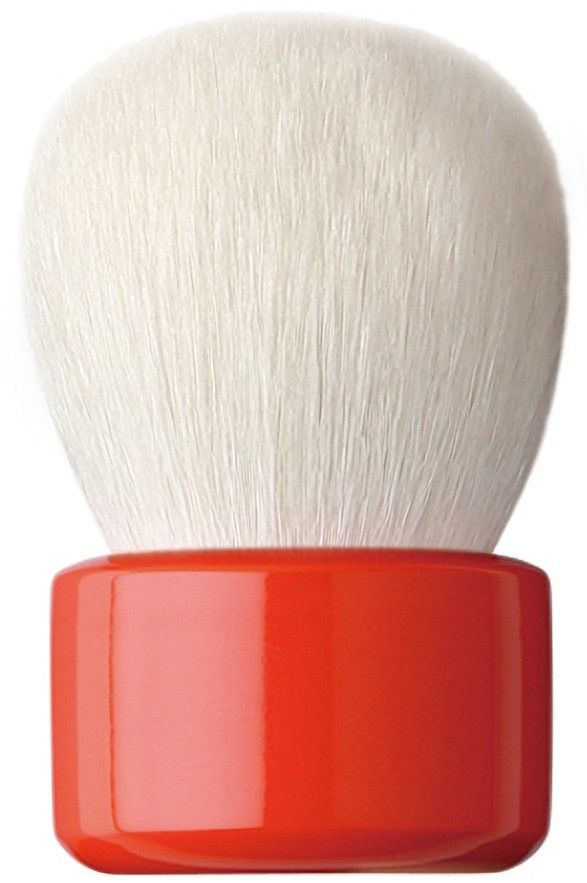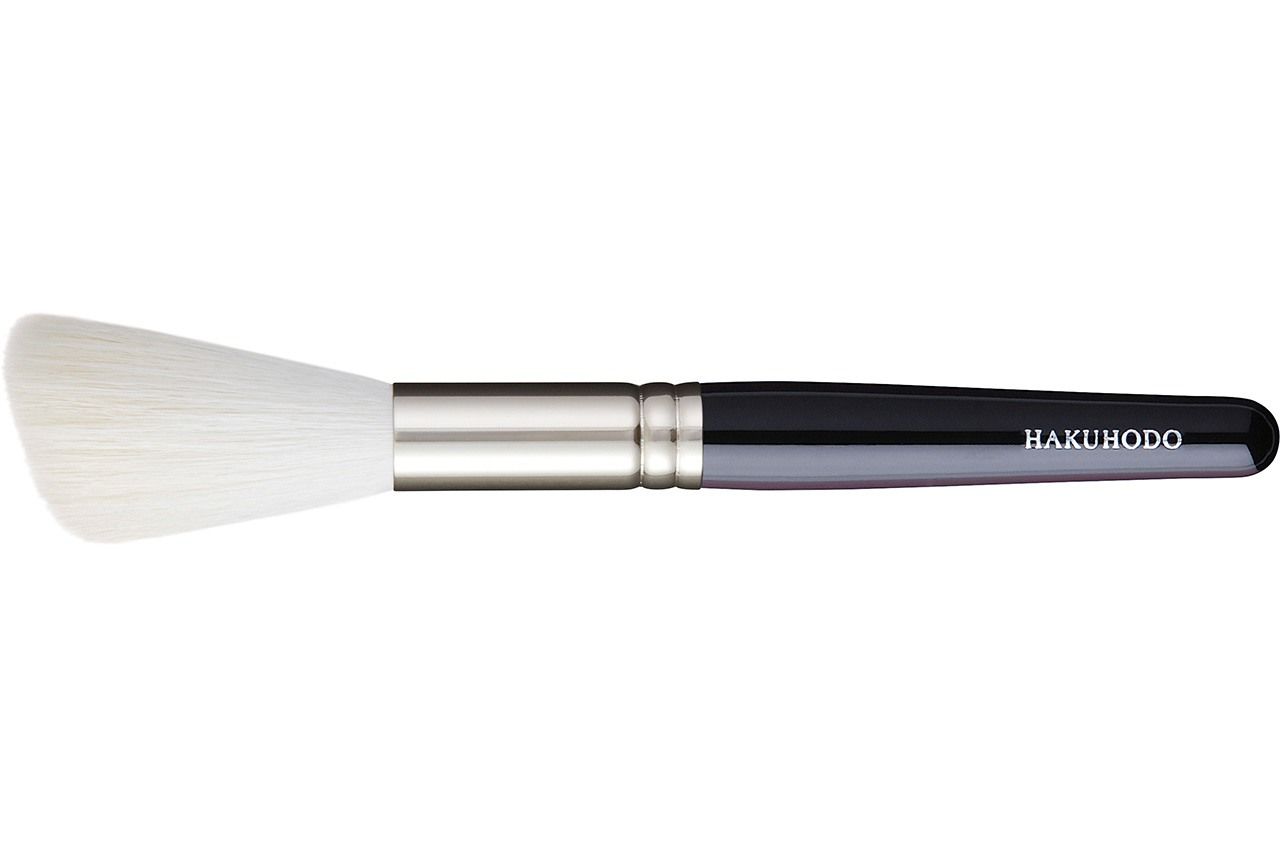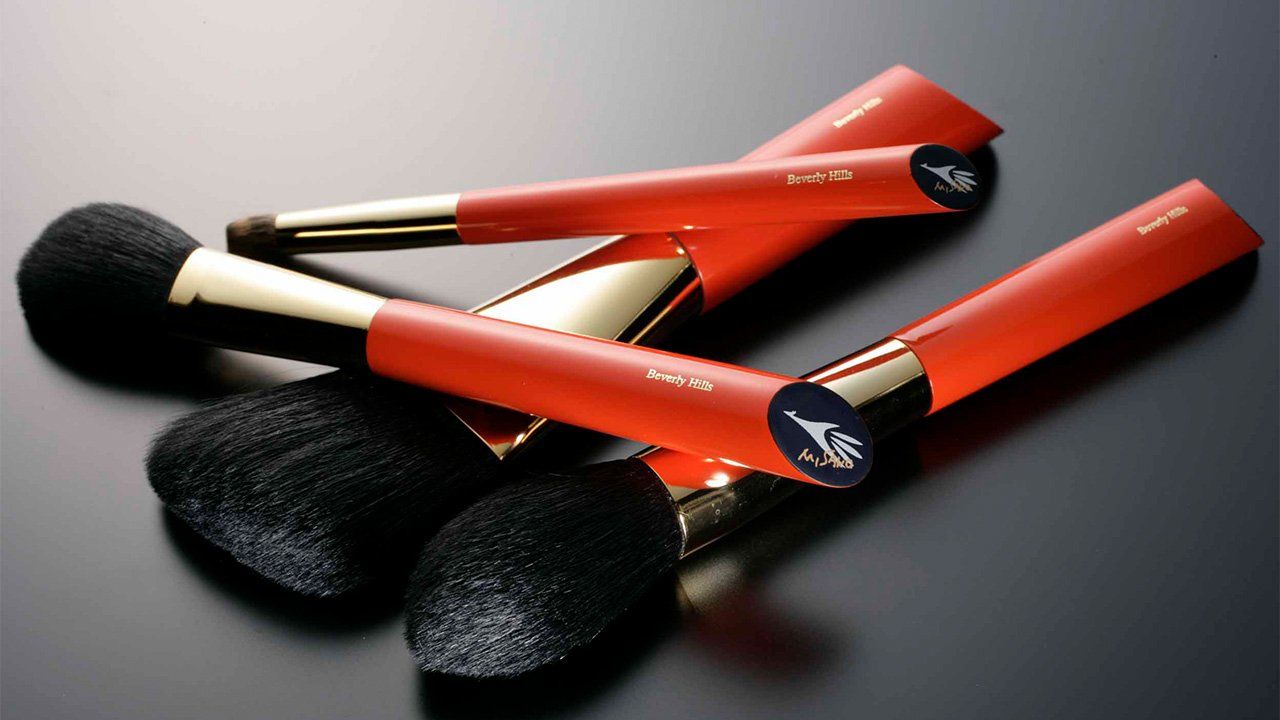
Hakuhōdō: Luxury Cosmetic Brushes that Highlight Traditional Japanese Crafts
Economy Work Culture Fashion- English
- 日本語
- 简体字
- 繁體字
- Français
- Español
- العربية
- Русский
Much More Than Just a Brush
Hakuhōdō is justifiably regarded around the world as the top brand for keshōfude cosmetic brushes.
They are perfectly shaped to fit the contours of your face. With just a single application, makeup can be applied evenly, creating a dramatically enhanced finish with the translucent-looking skin and bold, glamourous facial features that users desire. And what makes this dream a reality is the brushes made by Hakuhōdō.
Hakuhōdō is headquartered in Kumano, a town in the mountains of Hiroshima Prefecture, some 800 kilometers from Tokyo. This area is known for its production of Kumano fude, handmade brushes that have been designated as a traditional craft. What distinguishes Hakuhōdō is that it regards its products as keshōfude (cosmetic brushes) rather than the more general product of makeup brushes. Takamoto Hikaru, the company’s managing director and general manager, explains:
”Our definition of a ’brush’ is something formed by trimming the tips of hairs that have been bundled together, whereas Hakuhōdō’s fude have been created by arranging the hairs into shape without any kind of cutting. Animal hair, the main material of our brushes, has fine tips. It’s these delicate tips that create the feel of the fude against the skin. The hairs are gathered together, making use of these uncut tips, to form a head and create a keshōfude that moves smoothly and with precision.”
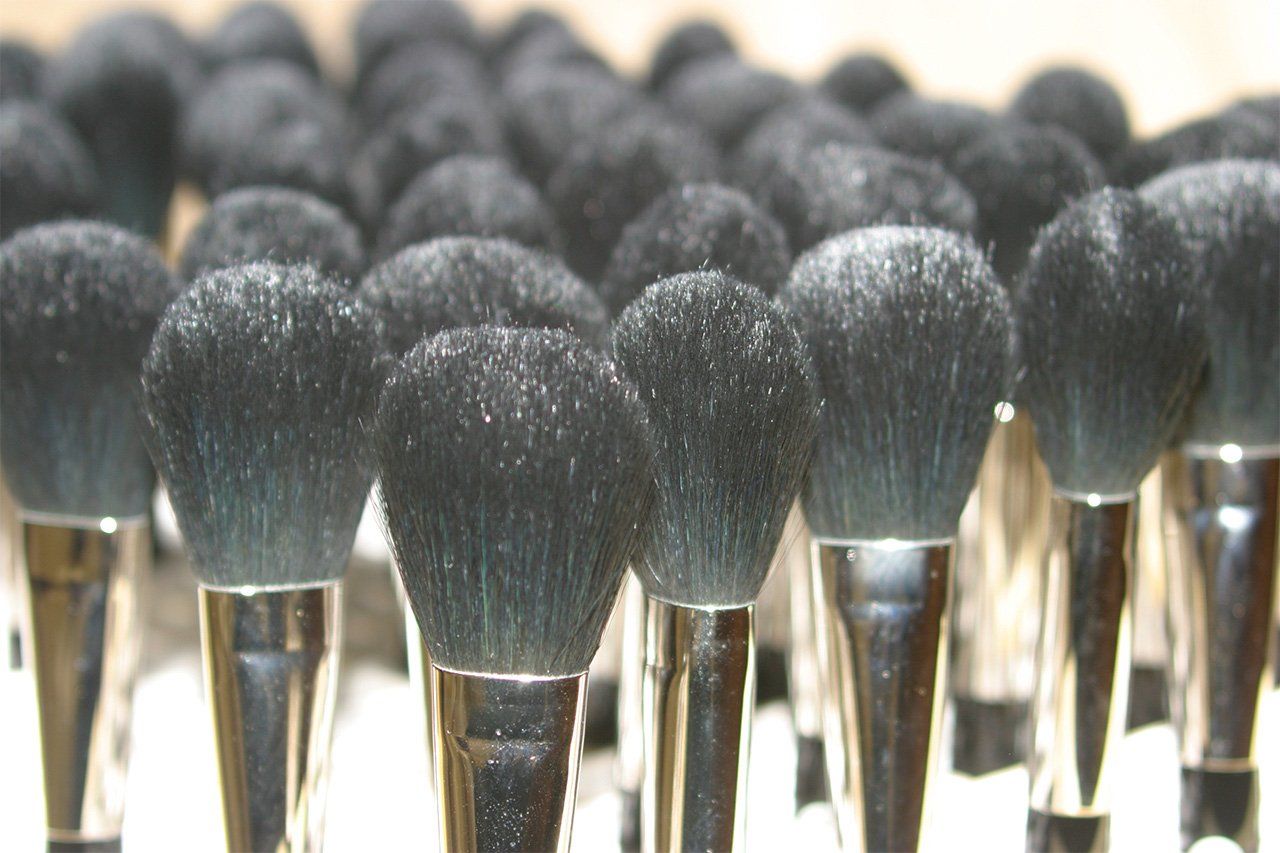
These keshōfude feature brush heads formed by bundling together natural hairs with the tips left intact. (Courtesy of Hakuhōdō)
The Hermès of Keshōfude
Hakuhōdō was established in 1974, when Takamoto Kazuo, Hikaru’s father, established Hakuhōdō independently from the family business, which has been engaged for generations in the production of fude in Kumano. He and his wife based themselves in a small prefabricated building and made high-quality brushes using traditional methods that had been passed down in Kumano since ancient times. These brushes were for primarily for the purpose of painting ceramics and dolls.
Takamoto Hikaru explains: ”My father knew at that time that fewer and fewer high-quality brushes for traditional crafts were being manufactured, so he started Hakuhōdō to supply fude to those who needed them.”
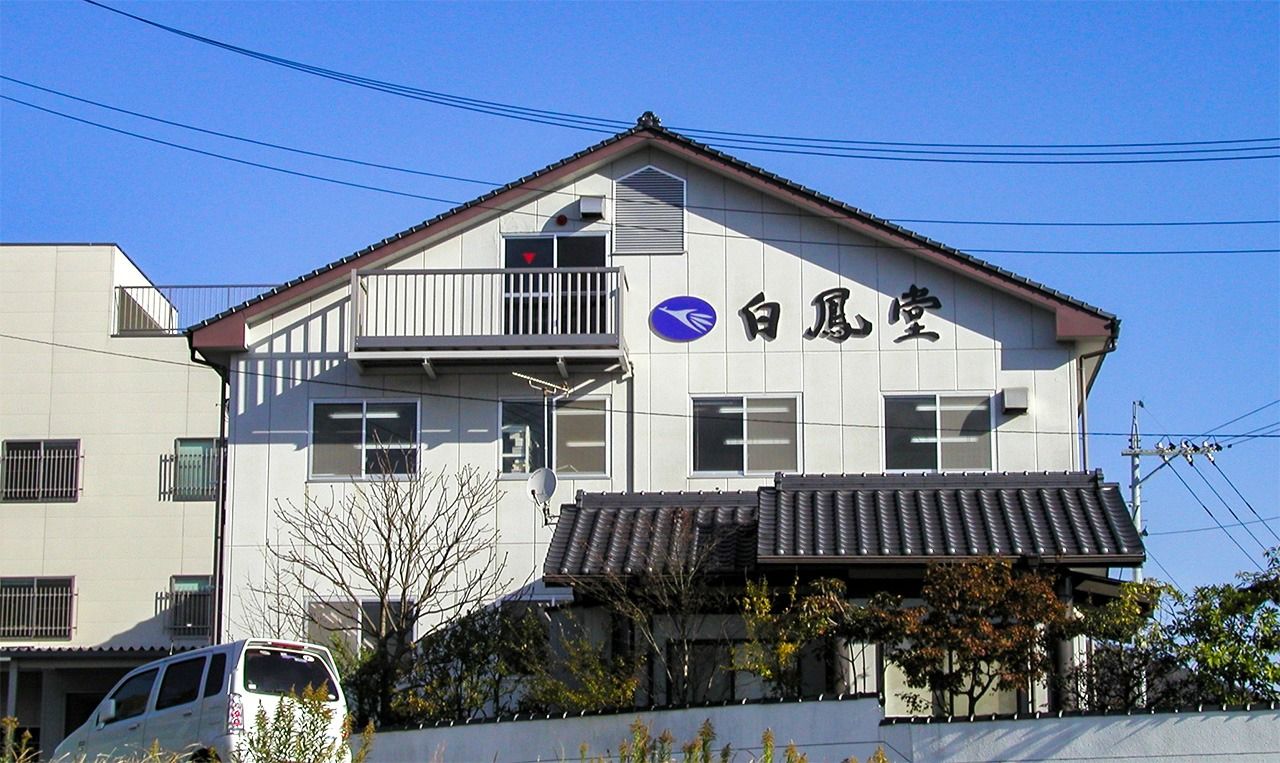
Hakuhōdō headquarters in Kumano, Hiroshima. (Courtesy of Hakuhōdō)
However, the demand for that type of fude was not high, making it unprofitable to specialize in making just those. In order to keep the company going, the firm started producing keshōfude, which at the time was a market predicted to grow.
While these days luxury cosmetic brushes are much more readily found, most brushes available back then had quite a simple design. They were also regarded as just an accessory that came included with packaged foundation or eyeshadow.
The makeup brushes in that day were based on western-style paint brushes. This meant that they were excellent for use on flat surfaces, as their main purpose was for creating oil paintings and other such art, but were not so practical for use on the three-dimensional features of the face.
In this instance, Japanese fude were much better suited for applying makeup because they were designed for painting solid objects like ceramics and dolls. They also had superior functionality for applying various materials like gold powder or high-viscosity lacquer, another point that made them suitable for use as keshōfude.
This is what drew Kazuo’s attention. Using Hakuhōdō’s advanced Japanese fude-making techniques meant it was possible to create a clear distinction with the simple brushes available in the market at that time. Kazuo was confident too that they could make a tool for the application of makeup that could give a beautiful finish.
Takamoto says that starting around 1980, they spent three to four years developing and perfecting the product, based on the traditional techniques used to make Kumano brushes. The hope was that they would be regarded as the “Hermès of keshōfude.” Even now, the company relies on those same manufacturing methods to produce its brushes.
One step in that unchanged process is known as saraetori, in which the natural hair that will form the fude head is sorted and separated according to its quality. A small blade, designed so that it doesn’t cut the hair tips, is passed over the bundles, catching any damaged or frayed ones. Saraetori, literally to ”take away by raking,” is done by hand and involves the careful removal of these poor-quality hairs one by one.
It is not possible to remove all the unwanted hairs during this step though, so Hakuhōdō conducts checks of the hair tips before and after each step throughout the manufacturing process. This sometimes results in as many as one-third to half of the natural hairs being discarded, but it is this exacting work that produces the smooth, well-aligned head of the fude.
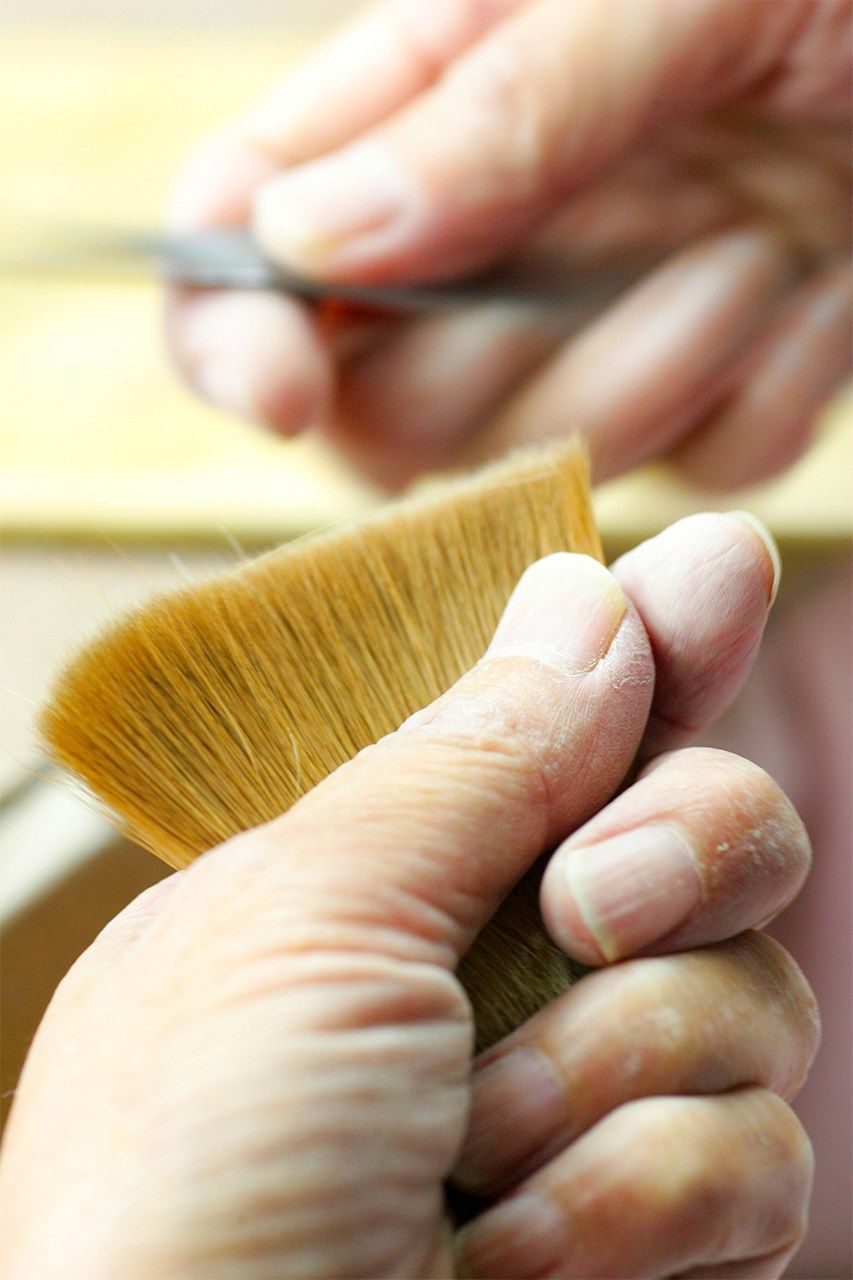
The saraetori process for removing waste hairs. (Courtesy of Hakuhōdō)
Hakuhōdō’s unique method for producing the core of the fude head also incorporates traditional craft techniques. This is a step known as seiho, where the hairs are shaped into a core. In the traditional production process for Kumano fude, bundles of hair are placed into a koma, a wooden mold, to form this core, after which the tips are then shaped by hand. However, at Hakuhōdō, through perfection of the various techniques, in this step the interior of the koma mold has been devised so that high-quality fude heads can be consistently produced with less shaping needed afterward.
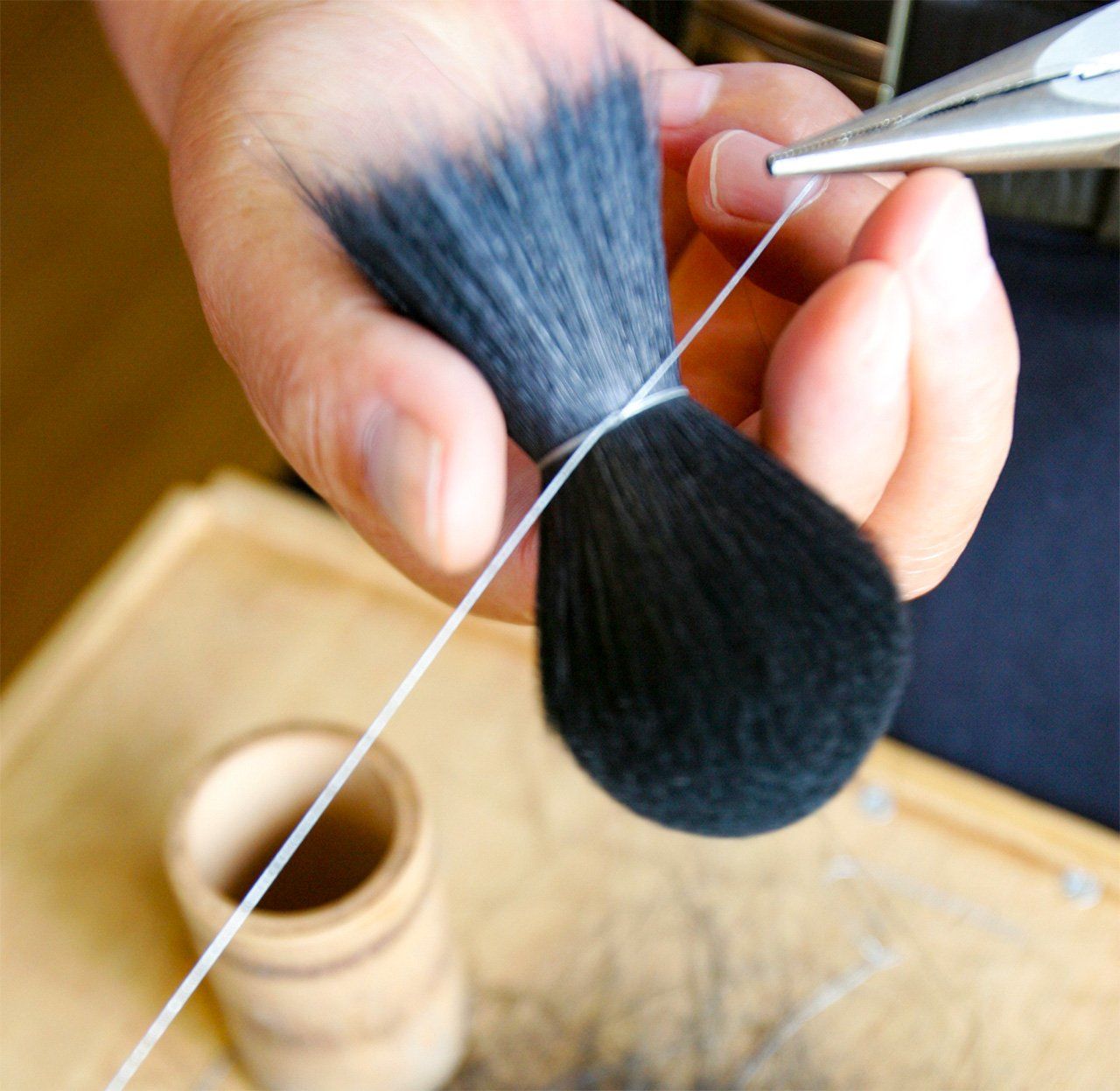
The brush core, beautifully formed using a koma. (Courtesy of Hakuhōdō)
Subdividing the Process Ensures Traditional Craft Quality and Increased Production
When this superior product was first released in the Japan market, response was slow due to the fact it had a much higher price tag than regular cosmetic brushes. Then, in 1995, something occurred that made sales soar. Andō Hiromi, a Japanese makeup artist working in New York who loves Hakuhōdō keshōfude, passed on a recommendation to the company that there was an interesting cosmetics brand in Canada that might be in need of their products.
These days, that brand—MAC—is one that everyone knows, but at the time it had just been established and still operating on a small scale. Its strategy, though, focused on makeup tools; in connection with that, brushes accounted for some 60% of its sales. Kazuo had no contacts at MAC, but went to meet its sales team anyway. The moment the brand manager, who was also a makeup artist, saw the Hakuhōdō products, he understood their undeniable quality. Hakuhōdō was contracted on the spot as an original equipment manufacturer.
Following that, those brand keshōfude were picked up by leading Hollywood actresses, and word of Hakuhōdō’s strength as a manufacturer spread by word of mouth. Hakuhōdō took that opportunity to develop the market. Through reverse importing, its products grew in popularity in Japan too. Along with its own brand, Hakuhōdō has now expanded to being an OEM supplying products to more than 150 Japanese and overseas companies, and is internationally recognized as the top brand for luxury cosmetic brushes.
”We currently produce 10,000 keshōfude a day. Around 150 employees at our two factories in Hiroshima produce the fude by hand. We don’t mechanize the process because the hairs used to make the brushes are not suitable for handling that way. Even if machines carried out the same operations as by hand, it would not result in the same level of perfection,” Takamoto explains.
The company has also been proactive in developing fude that are responsive to changing times and needs. With 800 types of keshōfude alone, Hakuhōdō can proudly state: “Our product line means that when someone wants to apply a certain kind of makeup, we have the right fude for it.” Including other fude for traditional craft purposes, the lineup surpasses 1,000.
”We produce our fude in typically small quantities with high variety,” says Takamoto. “If the system were mechanized, it would cost an enormous amount of money and just not be efficient. Items that are better made by hand can be produced at a more reasonable cost.”
While everything is handmade, it is the subdivision of the process steps that holds the key to maintaining high quality and steady mass production. A typical production process for manufacturing keshōfude involves seven separate stages. However, in Hakuhōdō’s case, the process is divided into 80 stages. The firm has has also implemented a system where one person is responsible for around three processes each.
Using this method of small separate steps means that a worker only needs to acquire a few skills compared to the process for traditional fude-making, where a single artisan is expected to complete the whole process. As a result, it significantly reduces the time necessary for learning the techniques, while increasing the degree of perfection in the finished work.
Focus has also been put on creating innovative tools to help with the handiwork. The koma used to form the core of the fude head, mentioned above, is an example of this. Using such tools improves work efficiency and ensures that anyone is able to consistently produce high quality items.
Supporting Traditional Crafts
It may seem like the production process runs smoothly, but there are issues. The use of natural hairs, an important material for the fude, has been affected in recent years, as consideration for protection of small animals means it has become harder to use hair other than that sourced from livestock like goats, horses, and pigs. This has led to a need to develop alternative synthetic fibers.
Even so, it is the traditional techniques passed through many generations that makes Hakuhōdō’s keshōfude such outstanding products.
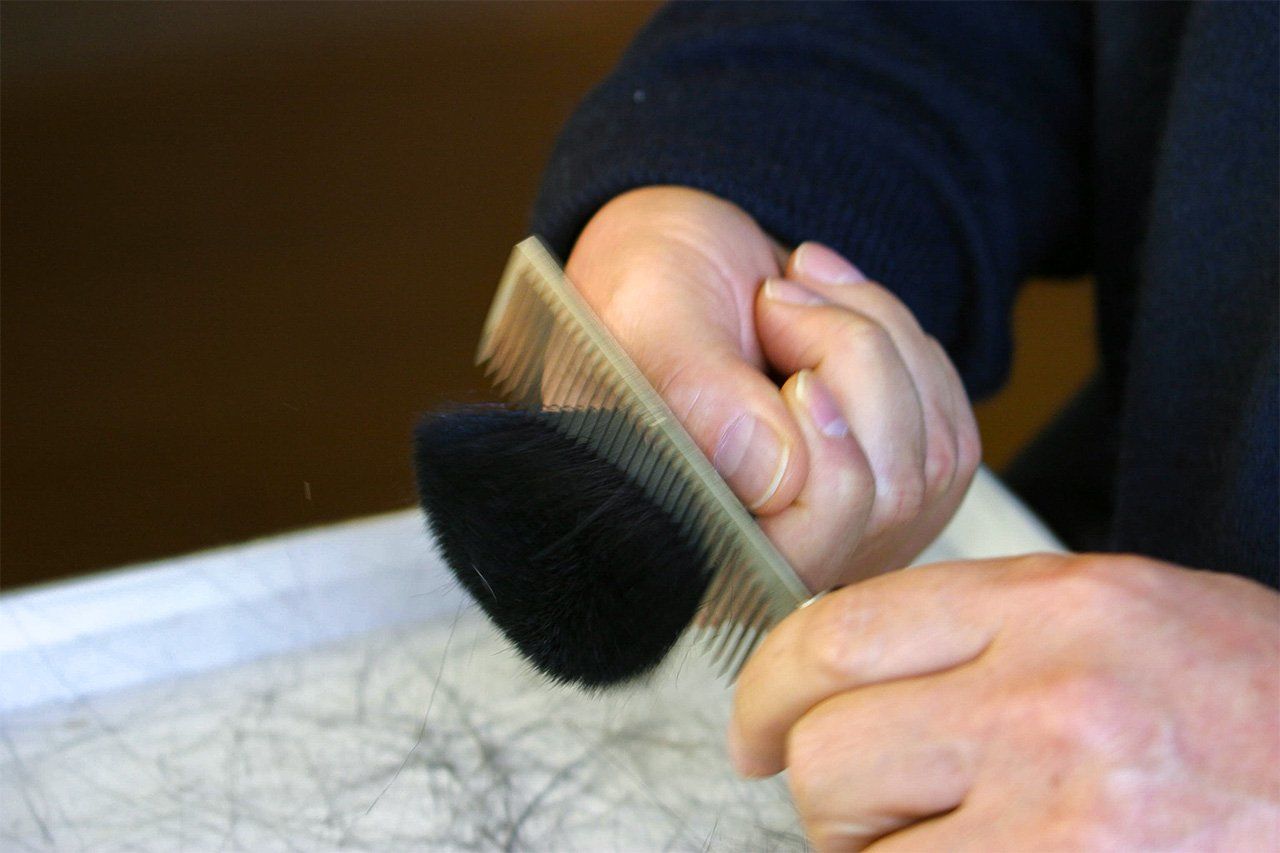
The hair tips are repeatedly arranged into shape. (Courtesy of Hakuhōdō)
Hakuhōdō keshōfude were created by adjusting and developing the traditional craft techniques for Kumano fude. Most importantly though, the company has also continued to make fude for traditional purposes, such as for painting ceramics and dolls, demonstrating that Hakuhōdō is inextricably linked with such crafts. Takamoto states:
“If you look at all the different traditional Japanese crafts, you will see that fude are used in many of the processes. They are a tool that supports traditional crafts. We can’t stop making them just because we think they aren’t profitable—they have an important purpose. I feel it is our duty to continue producing quality fude and supporting traditional Japanese crafts.”
He closes by talking about the appeal of fude.
“They are a tool that can help people bring about self-realization. Makeup, in principle, is a way to make yourself more attractive, give you confidence, and help you become the person you want to be. Drawing pictures and creating objects are also ways to achieve self-realization. Our wish is to keep supporting this.”
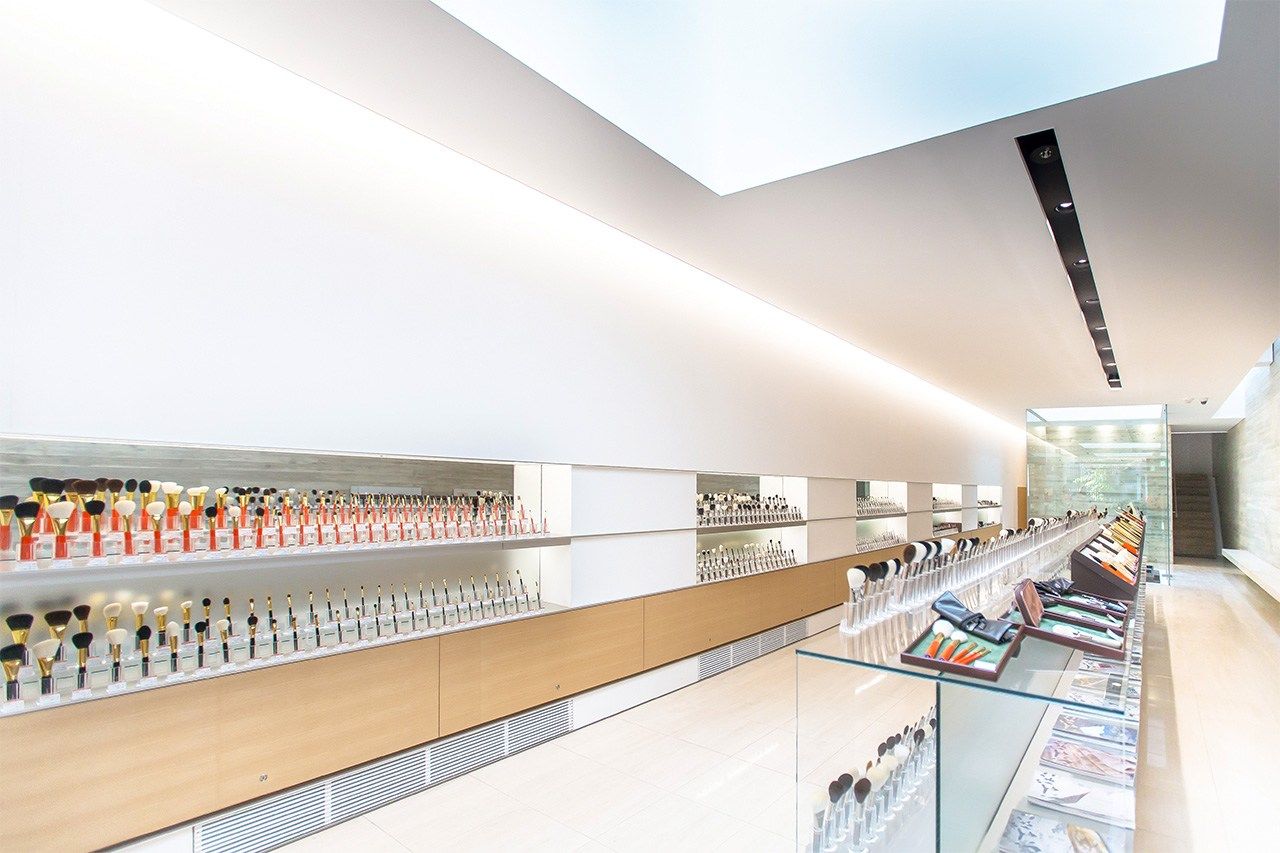
The Hakuhōdō flagship store in Kyoto. (Courtesy of Hakuhōdō)
Corporate Data
Hakuhōdō Co., Ltd.
Address: 7-10-9 Jōnohori, Kumano, Hiroshima Prefecture
CEO: Takamoto Sō
Business: Manufacturing and sale of brushes for calligraphy, mensō (painting of dolls’ faces), Nihonga and Western-style painting, design, and industrial uses
Capital: ¥50 million
Number of Employees: 250
Website:https://hakuho-do.co.jp/en
(Originally published in Japanese. Interview and text by Sugihara Yuka and Power News. Banner photo courtesy of Hakuhōdō.)
